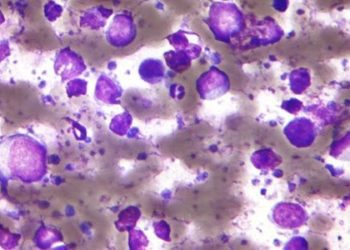Long term phototherapy can enhance treatment response in vitiligo
1. Examination of prospective studies found that a majority of patients with vitiligo had at least 25% re-pigmentation in response to phototherapy, with rates increasing with longer durations of treatment.
2. Subgroup analysis revealed marked repigmentation on the face and neck in patients receiving at least 6 months of narrow band UV-B (NBUVB) phototherapy.
Evidence Rating Level: 2 (Good)
Study Rundown: Vitiligo is a common chronic depigmentation disorder which has no definitive cure. Phototherapy, including both narrowband UV-B (NVUVB) and psoralen-UV-A (PUVA), has long been a mainstay of therapy for generalized disease. This systematic review and meta-analysis analyzed 35 prospective studies to quantify the benefit of phototherapy in patients with vitiligo. The primary outcome was re-pigmentation rate, and was classified as mild (≥25%), moderate (≥50%), or marked (≥75%).
The results suggested that longer treatments of phototherapy enhanced treatment response in generalized vitiligo patients. Subgroup analysis indicated that marked re-pigmentation occurred specifically on the face and neck with long term NBUVB phototherapy. This study, as with all systematic reviews, was limited by the heterogeneity of its patients and of the studies included for analysis. Further, quantifying re-pigmentation on a quartile scale was arbitrary and may not be a good measure of successful vitiligo management. However, the authors only included prospective studies with high quality of evidence, thus contributing to the study’s overall strength.
Click to read the study, published in JAMA Dermatology
Relevant Reading: Vitiligo: a comprehensive overview, part II: treatment options and approach to treatment.
In-Depth [systematic review and meta-analysis]: This study analyzed 35 studies including 1428 unique patients in order to determine how NVUVB and PUVA phototherapy influenced treatment response in vitiligo. In response to NVUVB therapy, mild re-pigmentation was observed in 62.1-75% of patients, moderate re-pigmentation was seen in 31.1-56.8% of patients, and marked re-pigmentation was observed in 13-35.7%, with rates increasing with longer study follow up period. Subgroup analysis revealed that marked responses were achieved face and neck for patients undergoing at least 6 months of NVUVB (95%CI 24.2%-64.2%), especially as compared to the trunk (26.1%, 95%CI 8.7-43.5%), extremities (17.3%, 95%CI 8.2-26.5%), and hands and feet (0). At six month and 12 month follow up periods following treatment with PUVA therapy, mild re-pigmentation was observed in 51.4 and 61.6% of patients, moderate re-pigmentation was seen in 23.5 and 34.3% of patients, and marked re-pigmentation was observed in 8.5 and 13.6%, respectively. This analysis of prospective studies suggested that longer treatment durations of phototherapy should be encouraged to improve treatment response to vitiligo. Further, re-pigmentation rates were higher with NVUVB phototherapy compared to those following PUVA phototherapy.
Image: CC/Wiki
©2017 2 Minute Medicine, Inc. All rights reserved. No works may be reproduced without expressed written consent from 2 Minute Medicine, Inc. Inquire about licensing here. No article should be construed as medical advice and is not intended as such by the authors or by 2 Minute Medicine, Inc.







